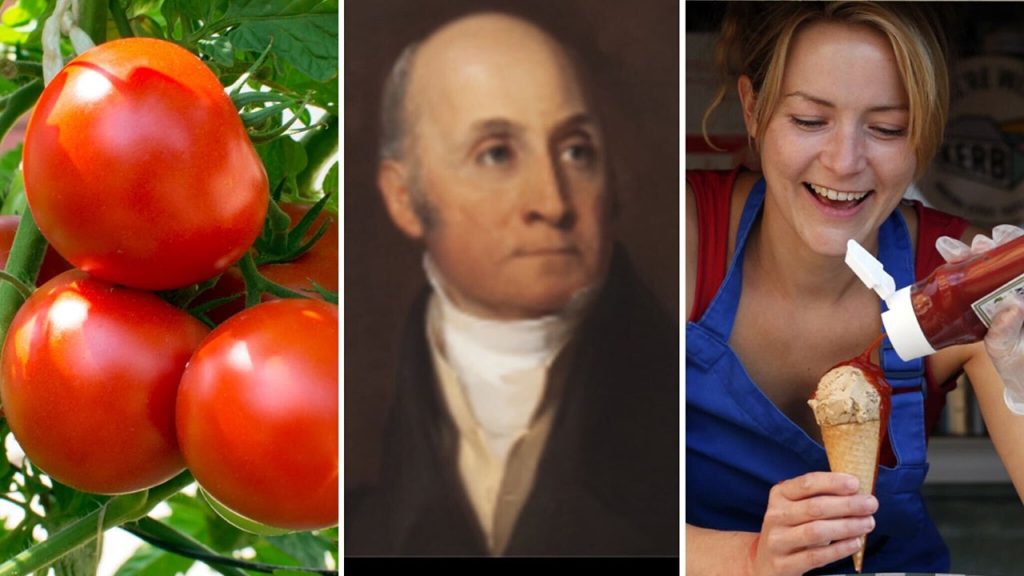Dr. James Mease, a Philadelphia native, is credited with creating the first batch of what we now call ketchup in 1812. A prominent figure in Philadelphia during his lifetime, Mease was a scientist, author, horticulturalist, and wartime military surgeon who had a wide range of intellectual interests. Born in 1771 to a prominent merchant and patriot who served in the American Revolution, Mease studied medicine and emerged as Dr. Mease in 1792. He served as a military surgeon in the War of 1812, America’s second war of independence.
Despite being known for his medical career, Mease’s intellectual interests spread far beyond just the human body. He was devoted to horticulture and agriculture, and was a prominent member of The Philadelphia Society for Promoting Agriculture. Mease was also involved in developing a vinegar company and had a strong interest in vine-growing fruits like love apples, which were commonly referred to as tomatoes at the time. The term love apples was commonly used in the centuries following the arrival of tomatoes in Europe after Christopher Columbus’ expeditions.
Mease’s first reference to love apples as a base for ketchup appeared in 1804. He published the first-known recipe for tomato ketchup in 1812, emphasizing the importance of using thinly sliced tomatoes, salt, and spices, along with the addition of brandy for flavoring. His ketchup had a long shelf life and was neutral enough to pair well with a variety of foods, making it a popular condiment especially after the Civil War. Henry John Heinz later improved the recipe, making ketchup sweeter and patenting the iconic Heinz bottle in 1882.
Dr. James Mease passed away in 1846, leaving behind a legacy of intellectual pursuits and a still-popular condiment that has become a staple in American households. His writings are housed at Duke University and UCLA, showcasing his vast intellect and dedication to improving the nation. Ketchup has become an integral part of American cuisine, serving as a base for various condiments like barbecue sauce and sweet & sour sauce. It is not just popular in the United States, but is also enjoyed around the world in unique ways such as on pizza in Poland and Lebanon or mixed with curry in Germany.
Mease’s creation of ketchup represented more than just a condiment; it served as a symbol of the United States and the blending of cultures through food. Americans consume an average of 11 pounds of ketchup per year, showcasing the enduring popularity and versatility of this beloved condiment. Mease’s invention has stood the test of time, evolving into a global ingredient that is used in a variety of surprising ways across different cultures. From hamburgers to hot dogs, ketchup has become a quintessential American flavor that embodies the spirit of innovation and creativity in the culinary world.


